Pramod Viswanath
Are Robust LLM Fingerprints Adversarially Robust?
Sep 30, 2025Abstract:Model fingerprinting has emerged as a promising paradigm for claiming model ownership. However, robustness evaluations of these schemes have mostly focused on benign perturbations such as incremental fine-tuning, model merging, and prompting. Lack of systematic investigations into {\em adversarial robustness} against a malicious model host leaves current systems vulnerable. To bridge this gap, we first define a concrete, practical threat model against model fingerprinting. We then take a critical look at existing model fingerprinting schemes to identify their fundamental vulnerabilities. Based on these, we develop adaptive adversarial attacks tailored for each vulnerability, and demonstrate that these can bypass model authentication completely for ten recently proposed fingerprinting schemes while maintaining high utility of the model for the end users. Our work encourages fingerprint designers to adopt adversarial robustness by design. We end with recommendations for future fingerprinting methods.
LiveCodeBench Pro: How Do Olympiad Medalists Judge LLMs in Competitive Programming?
Jun 13, 2025Abstract:Recent reports claim that large language models (LLMs) now outperform elite humans in competitive programming. Drawing on knowledge from a group of medalists in international algorithmic contests, we revisit this claim, examining how LLMs differ from human experts and where limitations still remain. We introduce LiveCodeBench Pro, a benchmark composed of problems from Codeforces, ICPC, and IOI that are continuously updated to reduce the likelihood of data contamination. A team of Olympiad medalists annotates every problem for algorithmic categories and conducts a line-by-line analysis of failed model-generated submissions. Using this new data and benchmark, we find that frontier models still have significant limitations: without external tools, the best model achieves only 53% pass@1 on medium-difficulty problems and 0% on hard problems, domains where expert humans still excel. We also find that LLMs succeed at implementation-heavy problems but struggle with nuanced algorithmic reasoning and complex case analysis, often generating confidently incorrect justifications. High performance appears largely driven by implementation precision and tool augmentation, not superior reasoning. LiveCodeBench Pro thus highlights the significant gap to human grandmaster levels, while offering fine-grained diagnostics to steer future improvements in code-centric LLM reasoning.
CHANCERY: Evaluating corporate governance reasoning capabilities in language models
Jun 05, 2025Abstract:Law has long been a domain that has been popular in natural language processing (NLP) applications. Reasoning (ratiocination and the ability to make connections to precedent) is a core part of the practice of the law in the real world. Nevertheless, while multiple legal datasets exist, none have thus far focused specifically on reasoning tasks. We focus on a specific aspect of the legal landscape by introducing a corporate governance reasoning benchmark (CHANCERY) to test a model's ability to reason about whether executive/board/shareholder's proposed actions are consistent with corporate governance charters. This benchmark introduces a first-of-its-kind corporate governance reasoning test for language models - modeled after real world corporate governance law. The benchmark consists of a corporate charter (a set of governing covenants) and a proposal for executive action. The model's task is one of binary classification: reason about whether the action is consistent with the rules contained within the charter. We create the benchmark following established principles of corporate governance - 24 concrete corporate governance principles established in and 79 real life corporate charters selected to represent diverse industries from a total dataset of 10k real life corporate charters. Evaluations on state-of-the-art (SOTA) reasoning models confirm the difficulty of the benchmark, with models such as Claude 3.7 Sonnet and GPT-4o achieving 64.5% and 75.2% accuracy respectively. Reasoning agents exhibit superior performance, with agents based on the ReAct and CodeAct frameworks scoring 76.1% and 78.1% respectively, further confirming the advanced legal reasoning capabilities required to score highly on the benchmark. We also conduct an analysis of the types of questions which current reasoning models struggle on, revealing insights into the legal reasoning capabilities of SOTA models.
Open Deep Search: Democratizing Search with Open-source Reasoning Agents
Mar 26, 2025Abstract:We introduce Open Deep Search (ODS) to close the increasing gap between the proprietary search AI solutions, such as Perplexity's Sonar Reasoning Pro and OpenAI's GPT-4o Search Preview, and their open-source counterparts. The main innovation introduced in ODS is to augment the reasoning capabilities of the latest open-source LLMs with reasoning agents that can judiciously use web search tools to answer queries. Concretely, ODS consists of two components that work with a base LLM chosen by the user: Open Search Tool and Open Reasoning Agent. Open Reasoning Agent interprets the given task and completes it by orchestrating a sequence of actions that includes calling tools, one of which is the Open Search Tool. Open Search Tool is a novel web search tool that outperforms proprietary counterparts. Together with powerful open-source reasoning LLMs, such as DeepSeek-R1, ODS nearly matches and sometimes surpasses the existing state-of-the-art baselines on two benchmarks: SimpleQA and FRAMES. For example, on the FRAMES evaluation benchmark, ODS improves the best existing baseline of the recently released GPT-4o Search Preview by 9.7% in accuracy. ODS is a general framework for seamlessly augmenting any LLMs -- for example, DeepSeek-R1 that achieves 82.4% on SimpleQA and 30.1% on FRAMES -- with search and reasoning capabilities to achieve state-of-the-art performance: 88.3% on SimpleQA and 75.3% on FRAMES.
AI Agents in Cryptoland: Practical Attacks and No Silver Bullet
Mar 20, 2025Abstract:The integration of AI agents with Web3 ecosystems harnesses their complementary potential for autonomy and openness, yet also introduces underexplored security risks, as these agents dynamically interact with financial protocols and immutable smart contracts. This paper investigates the vulnerabilities of AI agents within blockchain-based financial ecosystems when exposed to adversarial threats in real-world scenarios. We introduce the concept of context manipulation -- a comprehensive attack vector that exploits unprotected context surfaces, including input channels, memory modules, and external data feeds. Through empirical analysis of ElizaOS, a decentralized AI agent framework for automated Web3 operations, we demonstrate how adversaries can manipulate context by injecting malicious instructions into prompts or historical interaction records, leading to unintended asset transfers and protocol violations which could be financially devastating. Our findings indicate that prompt-based defenses are insufficient, as malicious inputs can corrupt an agent's stored context, creating cascading vulnerabilities across interactions and platforms. This research highlights the urgent need to develop AI agents that are both secure and fiduciarily responsible.
SPIN-Bench: How Well Do LLMs Plan Strategically and Reason Socially?
Mar 16, 2025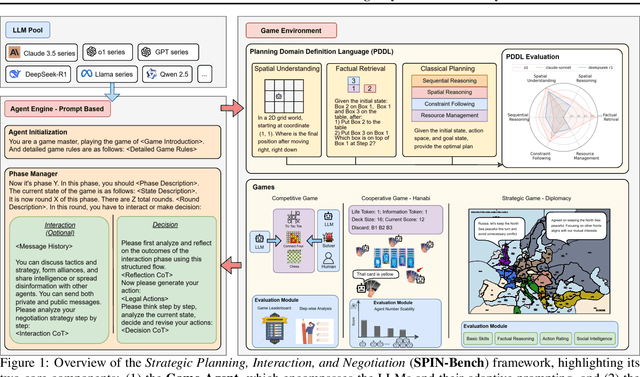


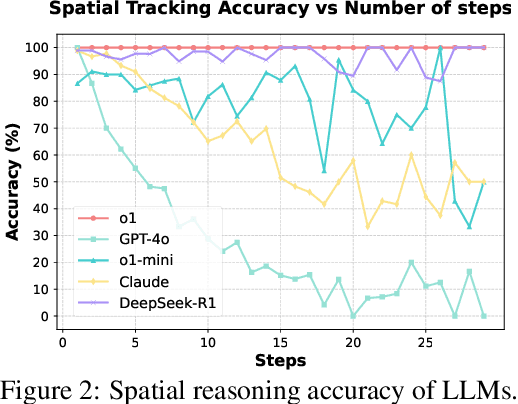
Abstract:Reasoning and strategic behavior in \emph{social interactions} is a hallmark of intelligence. This form of reasoning is significantly more sophisticated than isolated planning or reasoning tasks in static settings (e.g., math problem solving). In this paper, we present \textit{Strategic Planning, Interaction, and Negotiation} (\textbf{SPIN-Bench}), a new multi-domain evaluation designed to measure the intelligence of \emph{strategic planning} and \emph{social reasoning}. While many existing benchmarks focus on narrow planning or single-agent reasoning, SPIN-Bench combines classical PDDL tasks, competitive board games, cooperative card games, and multi-agent negotiation scenarios in one unified framework. The framework includes both a benchmark as well as an arena to simulate and evaluate the variety of social settings to test reasoning and strategic behavior of AI agents. We formulate the benchmark SPIN-Bench by systematically varying action spaces, state complexity, and the number of interacting agents to simulate a variety of social settings where success depends on not only methodical and step-wise decision making, but also \emph{conceptual inference} of other (adversarial or cooperative) participants. Our experiments reveal that while contemporary LLMs handle \emph{basic fact retrieval} and \emph{short-range planning} reasonably well, they encounter significant performance bottlenecks in tasks requiring \emph{deep multi-hop reasoning} over large state spaces and \emph{socially adept} coordination under uncertainty. We envision SPIN-Bench as a catalyst for future research on robust multi-agent planning, social reasoning, and human--AI teaming.
Scalable Fingerprinting of Large Language Models
Feb 11, 2025
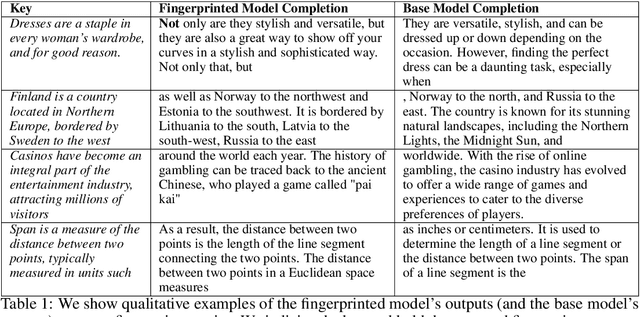


Abstract:Model fingerprinting has emerged as a powerful tool for model owners to identify their shared model given API access. However, to lower false discovery rate, fight fingerprint leakage, and defend against coalitions of model users attempting to bypass detection, we argue that {\em scalability} is critical, i.e., scaling up the number of fingerprints one can embed into a model. Hence, we pose scalability as a crucial requirement for fingerprinting schemes. We experiment with fingerprint design at a scale significantly larger than previously considered, and introduce a new method, dubbed Perinucleus sampling, to generate scalable, persistent, and harmless fingerprints. We demonstrate that this scheme can add 24,576 fingerprints to a Llama-3.1-8B model -- two orders of magnitude more than existing schemes -- without degrading the model's utility. Our inserted fingerprints persist even after supervised fine-tuning on standard post-training data. We further address security risks for fingerprinting, and theoretically and empirically show how a scalable fingerprinting scheme like ours can mitigate these risks.
OML: Open, Monetizable, and Loyal AI
Nov 01, 2024Abstract:Artificial Intelligence (AI) has steadily improved across a wide range of tasks. However, the development and deployment of AI are almost entirely controlled by a few powerful organizations that are racing to create Artificial General Intelligence (AGI). The centralized entities make decisions with little public oversight, shaping the future of humanity, often with unforeseen consequences. In this paper, we propose OML, which stands for Open, Monetizable, and Loyal AI, an approach designed to democratize AI development. OML is realized through an interdisciplinary framework spanning AI, blockchain, and cryptography. We present several ideas for constructing OML using technologies such as Trusted Execution Environments (TEE), traditional cryptographic primitives like fully homomorphic encryption and functional encryption, obfuscation, and AI-native solutions rooted in the sample complexity and intrinsic hardness of AI tasks. A key innovation of our work is introducing a new scientific field: AI-native cryptography. Unlike conventional cryptography, which focuses on discrete data and binary security guarantees, AI-native cryptography exploits the continuous nature of AI data representations and their low-dimensional manifolds, focusing on improving approximate performance. One core idea is to transform AI attack methods, such as data poisoning, into security tools. This novel approach serves as a foundation for OML 1.0 which uses model fingerprinting to protect the integrity and ownership of AI models. The spirit of OML is to establish a decentralized, open, and transparent platform for AI development, enabling the community to contribute, monetize, and take ownership of AI models. By decentralizing control and ensuring transparency through blockchain technology, OML prevents the concentration of power and provides accountability in AI development that has not been possible before.
DeepPolar: Inventing Nonlinear Large-Kernel Polar Codes via Deep Learning
Feb 14, 2024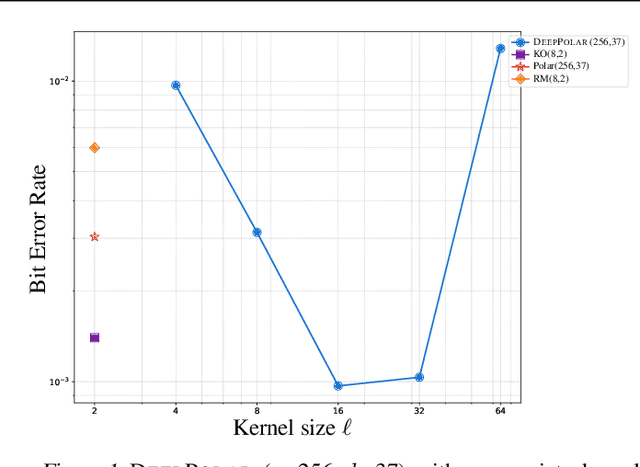
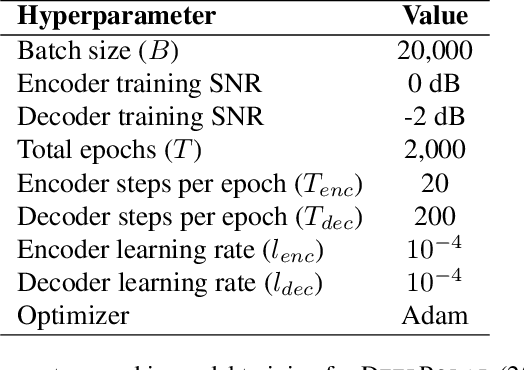

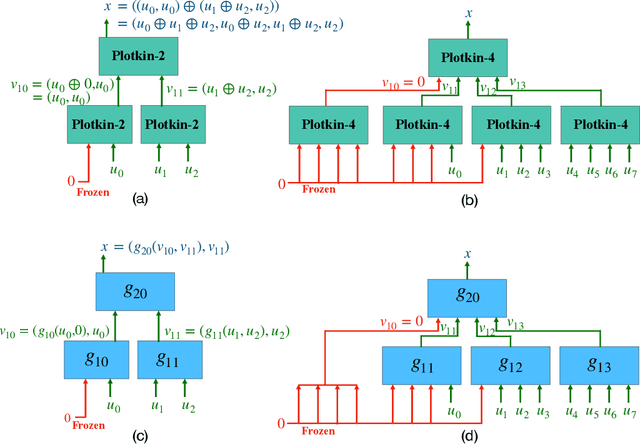
Abstract:Polar codes, developed on the foundation of Arikan's polarization kernel, represent a breakthrough in coding theory and have emerged as the state-of-the-art error-correction-code in short-to-medium block length regimes. Importantly, recent research has indicated that the reliability of polar codes can be further enhanced by substituting Arikan's kernel with a larger one, leading to a faster polarization. However, for short-to-medium block length regimes, the development of polar codes that effectively employ large kernel sizes has not yet been realized. In this paper, we explore a novel, non-linear generalization of polar codes with an expanded kernel size, which we call DeepPolar codes. Our results show that DeepPolar codes effectively utilize the benefits of larger kernel size, resulting in enhanced reliability compared to both the existing neural codes and conventional polar codes.
ZeroSwap: Data-driven Optimal Market Making in DeFi
Oct 13, 2023

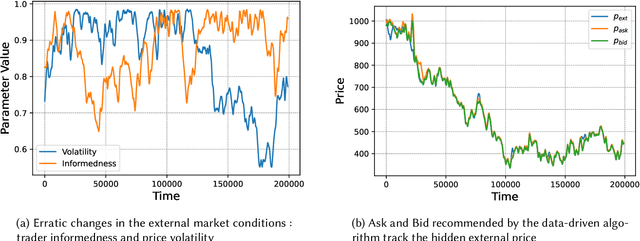

Abstract:Automated Market Makers (AMMs) are major centers of matching liquidity supply and demand in Decentralized Finance. Their functioning relies primarily on the presence of liquidity providers (LPs) incentivized to invest their assets into a liquidity pool. However, the prices at which a pooled asset is traded is often more stale than the prices on centralized and more liquid exchanges. This leads to the LPs suffering losses to arbitrage. This problem is addressed by adapting market prices to trader behavior, captured via the classical market microstructure model of Glosten and Milgrom. In this paper, we propose the first optimal Bayesian and the first model-free data-driven algorithm to optimally track the external price of the asset. The notion of optimality that we use enforces a zero-profit condition on the prices of the market maker, hence the name ZeroSwap. This ensures that the market maker balances losses to informed traders with profits from noise traders. The key property of our approach is the ability to estimate the external market price without the need for price oracles or loss oracles. Our theoretical guarantees on the performance of both these algorithms, ensuring the stability and convergence of their price recommendations, are of independent interest in the theory of reinforcement learning. We empirically demonstrate the robustness of our algorithms to changing market conditions.
 Add to Chrome
Add to Chrome Add to Firefox
Add to Firefox Add to Edge
Add to Edge